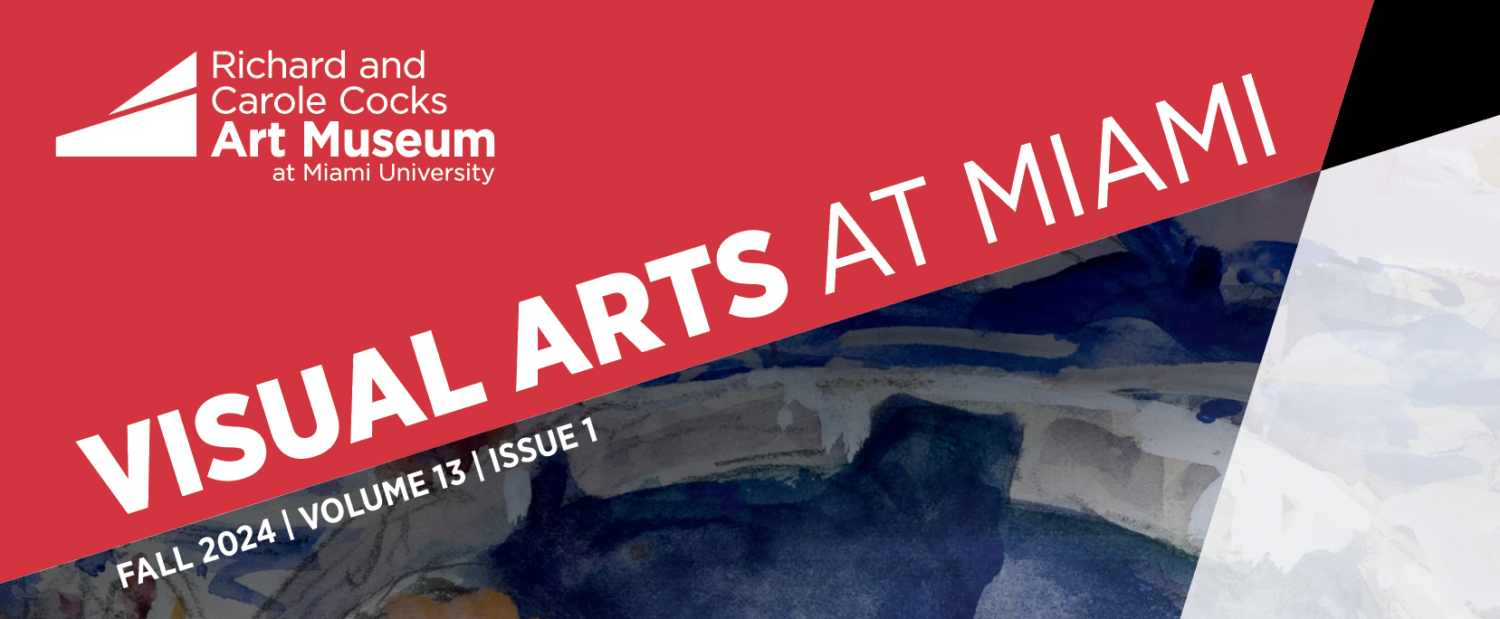
About the Park
The Sculpture Park is a work in progress at the Miami University Art Museum. The first sculpture to be installed was Star-Crossed, 1979, by Nancy Holt. Eight sculptures have been added since then. In January of 1990, Elizabeth Weisner Robecheck, a landscape architect, developed a site plan for future sculpture. Her design coincides with the Field Theory of Walter A. Netsch, the museum architect, and was funded by the Ohio Arts Council and the National Endowment for the Arts. Included in the plan was the “Seats of Awareness” project, which specified benches or seating designed by artists. Artists from Ohio, Indiana, and Kentucky were invited to participate in a juried competition. The Thomas Emery Foundation in Cincinnati assisted with funding for the “Seats of Awareness” project.
The latest addition to the Sculpture Park was in 2008, as part of Miami’s bicentennial (1809–2009). A Tribe Named Miami, A Surveyors Stake, A Town Named Oxford, memorializes the Native American presence in what would become Southwest Ohio, teh beginning of white settlement in the region, and the establishment of Miami University.
About the Sculptures
 Fletcher Benton’s folded circle series demonstrates the artist’s belief that basic
Fletcher Benton’s folded circle series demonstrates the artist’s belief that basic
geometric forms can be used to create fresh, new ideas in art. This work is intended to be viewed from every angle; from above and below, as well as from the ground. He experiments with a variety of positions in which the different planes of a sculpture can describe space.
 Don Lawler, a Kentucky-born sculptor who has exhibited works throughout the country, created two “Seats of Awareness” for the Sculpture Park, titled Skeuomorph (above) and Spinozalith (right). The title Skeuomorph is a reference to something made in the form of another utensil or implement.
Don Lawler, a Kentucky-born sculptor who has exhibited works throughout the country, created two “Seats of Awareness” for the Sculpture Park, titled Skeuomorph (above) and Spinozalith (right). The title Skeuomorph is a reference to something made in the form of another utensil or implement.
B oth of Don Lawler’s sculptures are made of Indiana limestone and are dedicated to professors who most inspired the donor during his education at Miami. Spinozalith (above) is rough-hewn and massive and stands alone in the open, whereas Skeuomorph (left) is a smooth, graceful bench placed in a quiet location in the pine grove near the museum.
oth of Don Lawler’s sculptures are made of Indiana limestone and are dedicated to professors who most inspired the donor during his education at Miami. Spinozalith (above) is rough-hewn and massive and stands alone in the open, whereas Skeuomorph (left) is a smooth, graceful bench placed in a quiet location in the pine grove near the museum.
 Tribe elder and artist Eugene Brown created a sculpture that intertwines the cultures of Miami University and the Miami Tribe of Oklahoma. The artwork incorporates symbols and colors that represent the rich heritage of both entities. Emblems of a sand-hill crane and a turtle represent Brown’s respect to his forefathers, while the university’s seal at the base of the sculpture shows admiration for the academic community.
Tribe elder and artist Eugene Brown created a sculpture that intertwines the cultures of Miami University and the Miami Tribe of Oklahoma. The artwork incorporates symbols and colors that represent the rich heritage of both entities. Emblems of a sand-hill crane and a turtle represent Brown’s respect to his forefathers, while the university’s seal at the base of the sculpture shows admiration for the academic community.

Roy Cartwright creates sculptures that are inspired by nature and allude to the human relationship with the environment. “My intent is to make pieces that are fun to be with. I enjoy shapes, colors, profiles. When others are reminded of experiences in their lives, or are momentarily transformed to another time or space, that is enough.”

Mark di Suvero has been making large-scale public sculptures since the 1960s. Born in Shanghai, he moved at an early age to the United States with his family. His works include seven outdoor sculptures shown at the Venice Biennale and an exhibition at Socrates Sculpture Park in Long Island City, New York.

Richard Hunt’s interest in metal sculpture was sparked by the metal works in the Field Museum’s African collection. He studied at the School of the Art Institute of Chicago in the 1950s and later in England, France, Spain and Italy. Hunt acquired the technical skills for metal work by producing small-scale jewelry and craft items.

Three Storms represents the artist’s fascination with clouds and rain. Barry Gunderson noted that he often studied natural history and science publications as sources of inspiration and that his interest in clouds went back more than 25 years. “Back then, I was trying to capture the clouds. Now I am letting them rain on us,” he said.

Nancy Holt, a contemporary outdoor sculptor, focused her art on the subject of perception. She built strong enclosures with controlled forms that drew viewers into experiencing both the outside and the inside of the piece. Earth sculpture developed during the 1970s as a reaction against the confining, walled-in spaces of traditional museums. Star-Crossed is one of her strongest statements.
For more information, visit the Sculpture
page at MiamiOH.edu/ArtMuseum
